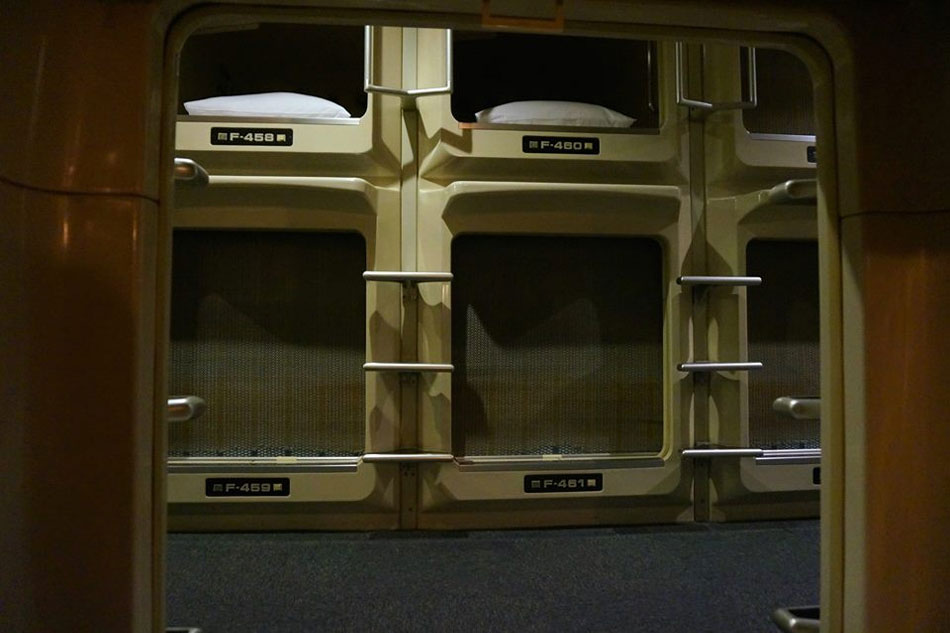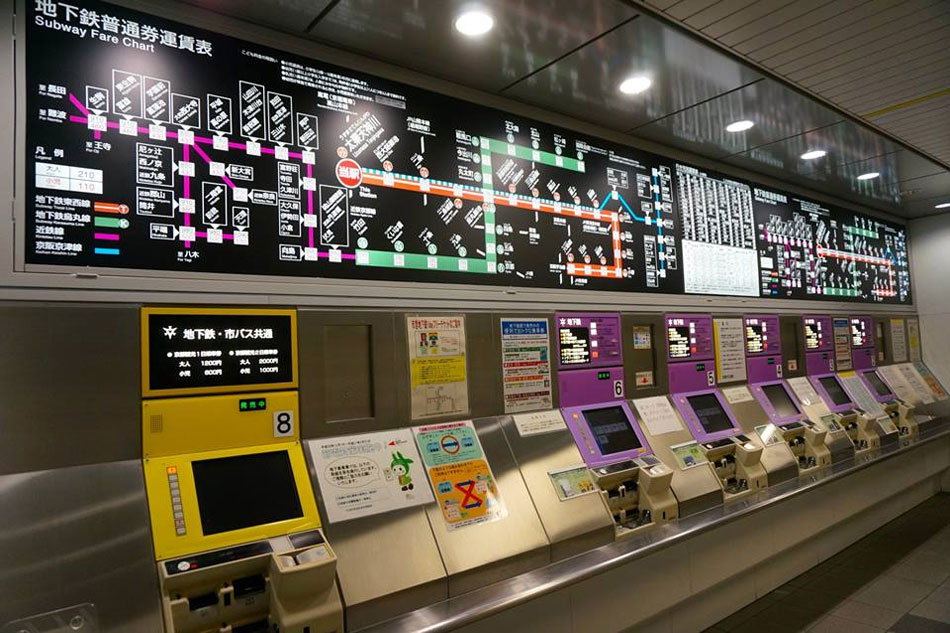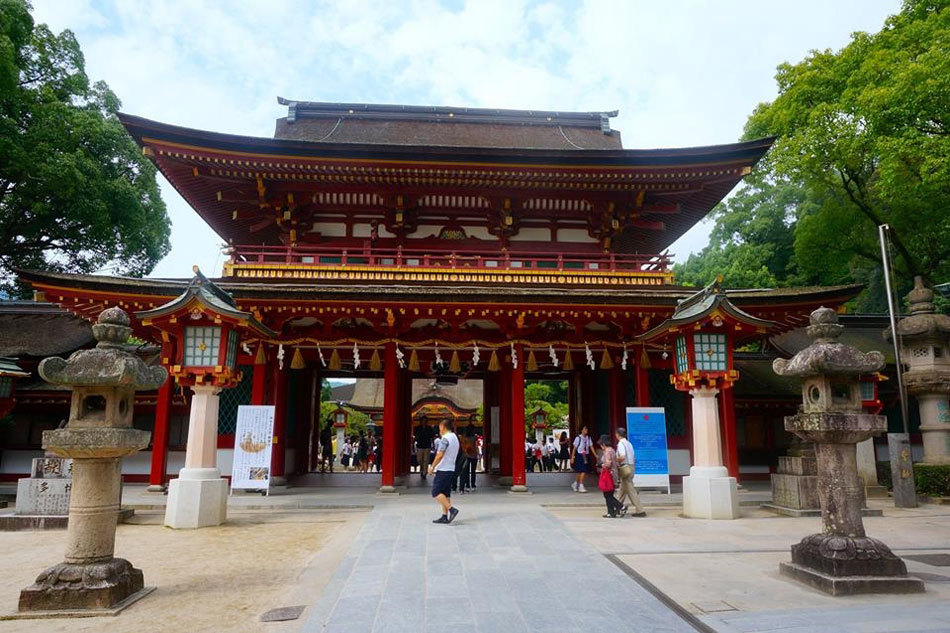Going to Japan? 10 ways to save money | ABS-CBN
ADVERTISEMENT

Welcome, Kapamilya! We use cookies to improve your browsing experience. Continuing to use this site means you agree to our use of cookies. Tell me more!
Going to Japan? 10 ways to save money
Going to Japan? 10 ways to save money
Karen Flores,
ABS-CBN News
Published Nov 23, 2016 12:13 PM PHT
OSAKA, Japan – Many Filipinos still assume that traveling to Japan is expensive, but it doesn’t have to be.
OSAKA, Japan – Many Filipinos still assume that traveling to Japan is expensive, but it doesn’t have to be.
Here are some ways to save as much money as possible during your trip.
Here are some ways to save as much money as possible during your trip.
1. TRAVEL OFF-PEAK
Spring (March to May) remains the most popular time for tourism in Japan as visitors flock to the country to see sakura or cherry blossoms.
Spring (March to May) remains the most popular time for tourism in Japan as visitors flock to the country to see sakura or cherry blossoms.
Because it’s peak season, expect higher rates for flights and accommodations. The same goes for the Golden Week holiday season from April 29 to May 5 and adjacent weekends, the Obon season around mid-August, the last week of December, and during New Year celebrations.
Because it’s peak season, expect higher rates for flights and accommodations. The same goes for the Golden Week holiday season from April 29 to May 5 and adjacent weekends, the Obon season around mid-August, the last week of December, and during New Year celebrations.
ADVERTISEMENT
Avoid the crowds and save a bundle by traveling off-peak. Japan is a year-round destination – you are bound to find something interesting no matter the season.
Avoid the crowds and save a bundle by traveling off-peak. Japan is a year-round destination – you are bound to find something interesting no matter the season.
2. LOOK FOR CHEAP FLIGHTS
More Filipinos have been visiting Japan for two main reasons – the relaxed visa policy and the increasing flights between the Philippines and the East Asian country.
More Filipinos have been visiting Japan for two main reasons – the relaxed visa policy and the increasing flights between the Philippines and the East Asian country.
And many of these flights are dirt-cheap, if you know when and where to look. A round-trip Manila-Tokyo ticket, for instance, could go as low as P1,900 per person, excluding checked luggage. Yes, it’s a true story.
And many of these flights are dirt-cheap, if you know when and where to look. A round-trip Manila-Tokyo ticket, for instance, could go as low as P1,900 per person, excluding checked luggage. Yes, it’s a true story.
Be on the lookout for seat sale promos of budget airlines – they usually announce at midnight – and sign up for their newsletters to stay updated.
Be on the lookout for seat sale promos of budget airlines – they usually announce at midnight – and sign up for their newsletters to stay updated.
3. PLANE OR SHINKANSEN? IT DEPENDS
Visitors who are planning to go to another city in Japan often ask, “Plane or shinkansen?” Well, it depends on where you are and where you want to go.
Visitors who are planning to go to another city in Japan often ask, “Plane or shinkansen?” Well, it depends on where you are and where you want to go.
Flying is still king if you are going to far-flung destinations from Tokyo like the northernmost island of Hokkaido, or Kyushu in southern Japan. Domestic flights of budget airlines in Japan are still generally cheaper compared to shinkansen tickets, and they take less time.
Flying is still king if you are going to far-flung destinations from Tokyo like the northernmost island of Hokkaido, or Kyushu in southern Japan. Domestic flights of budget airlines in Japan are still generally cheaper compared to shinkansen tickets, and they take less time.
The shinkansen or bullet train is more convenient for inter-city travel – say, Tokyo to Nagoya – as passengers no longer have to endure lengthy queues at check-in and boarding. It is also sometimes cheaper compared to flying out, but compare with the budget airlines’ prices first just to be sure.
The shinkansen or bullet train is more convenient for inter-city travel – say, Tokyo to Nagoya – as passengers no longer have to endure lengthy queues at check-in and boarding. It is also sometimes cheaper compared to flying out, but compare with the budget airlines’ prices first just to be sure.
4. CONSIDER ALTERNATIVE ACCOMMODATION
One of the many great things about Japan is that it is immaculately clean. Even cheap youth hostels are safe and well-maintained, complete with high-tech toilets.
One of the many great things about Japan is that it is immaculately clean. Even cheap youth hostels are safe and well-maintained, complete with high-tech toilets.
Be adventurous and save more money by trying alternative accommodations in Japan such as capsule hotels, which start at around P1,300 per person per night. Dorm beds at guesthouses can go even lower at around P700 per night.
Be adventurous and save more money by trying alternative accommodations in Japan such as capsule hotels, which start at around P1,300 per person per night. Dorm beds at guesthouses can go even lower at around P700 per night.
If you’re looking for a hotel that caters specifically to Filipino tourists, try the newly opened Karaksa Hotel in Osaka or Kyoto.
If you’re looking for a hotel that caters specifically to Filipino tourists, try the newly opened Karaksa Hotel in Osaka or Kyoto.
5. DON’T TAKE A TAXI
If you’re in a large city in Japan, you should only take a taxi if: a) You missed the last train; b) You’re too tired to walk and/or you have no idea where to go; or c) Money means nothing to you.
If you’re in a large city in Japan, you should only take a taxi if: a) You missed the last train; b) You’re too tired to walk and/or you have no idea where to go; or c) Money means nothing to you.
Taxis here are generally expensive, which is understandable considering Japan’s efficient public transportation network. Save thousands of Japanese yen and take a bus or train instead. Or better yet, explore the city on foot.
Taxis here are generally expensive, which is understandable considering Japan’s efficient public transportation network. Save thousands of Japanese yen and take a bus or train instead. Or better yet, explore the city on foot.
6. VISIT FREE TOURIST SPOTS
Japan has plenty of free sightseeing spots, from temples and shrines to wet markets, parks and hiking trails, so make the most out of them.
Japan has plenty of free sightseeing spots, from temples and shrines to wet markets, parks and hiking trails, so make the most out of them.
Instead of going to towers with hefty admission fees, try visiting government buildings and mall rooftops which offer stunning views for free.
Instead of going to towers with hefty admission fees, try visiting government buildings and mall rooftops which offer stunning views for free.
7. WHEN IN DOUBT, GO TO A KONBINI
Convenience stores or konbini can be found all over Japan, offering a wide range of products and services to locals and tourists – hot and cold food and drinks, ATMs, ticket reservations, even adult magazines.
Convenience stores or konbini can be found all over Japan, offering a wide range of products and services to locals and tourists – hot and cold food and drinks, ATMs, ticket reservations, even adult magazines.
If you don’t want to spend money on international roaming or a pocket Wi-Fi, visit a nearby konbini to connect to the Internet for free. Most of these convenience stores are open 24 hours, just what you need when you can’t find your way back to the hotel after a night-out.
If you don’t want to spend money on international roaming or a pocket Wi-Fi, visit a nearby konbini to connect to the Internet for free. Most of these convenience stores are open 24 hours, just what you need when you can’t find your way back to the hotel after a night-out.
8. IF YOU’RE GOING TO SPLURGE, DO IT DURING LUNCHTIME
Good food is everywhere in Japan, even at fast food chains and cheap rice bowl spots. Tokyo has long been hailed as the world’s greatest food city, with the most number of three Michelin-starred restaurants since 2009.
Good food is everywhere in Japan, even at fast food chains and cheap rice bowl spots. Tokyo has long been hailed as the world’s greatest food city, with the most number of three Michelin-starred restaurants since 2009.
To maximize your wallet while traveling in Japan, splurge on a meal during lunchtime. Many restaurants give good lunch discounts, especially on weekdays, at half the price of their dinner menus.
To maximize your wallet while traveling in Japan, splurge on a meal during lunchtime. Many restaurants give good lunch discounts, especially on weekdays, at half the price of their dinner menus.
9. TRY CONVEYOR BELT SUSHI RESTAURANTS
Want to enjoy sushi without burning a hole in your pocket? Go to a kaiten-zushi or a conveyor belt restaurant during your visit to Japan.
Want to enjoy sushi without burning a hole in your pocket? Go to a kaiten-zushi or a conveyor belt restaurant during your visit to Japan.
In kaiten-zushi spots, a plate of two pieces of sushi costs 130 Japanese yen (around P58.50) on average. It’s not as good as the ones served at a fancy sushi restaurant, but with the price, it’s hard to complain.
In kaiten-zushi spots, a plate of two pieces of sushi costs 130 Japanese yen (around P58.50) on average. It’s not as good as the ones served at a fancy sushi restaurant, but with the price, it’s hard to complain.
10. CHECK OUT THE DISCOUNT STORES
Looking for pasalubong? Japan has a lot of discount stores, such as 100-yen (around P45) shops selling anything from school supplies to snacks.
Looking for pasalubong? Japan has a lot of discount stores, such as 100-yen (around P45) shops selling anything from school supplies to snacks.
There is also Don Quijote – also known as Donki – a chain of discount stores crammed with a wide range of products.
There is also Don Quijote – also known as Donki – a chain of discount stores crammed with a wide range of products.
ADVERTISEMENT
ADVERTISEMENT












